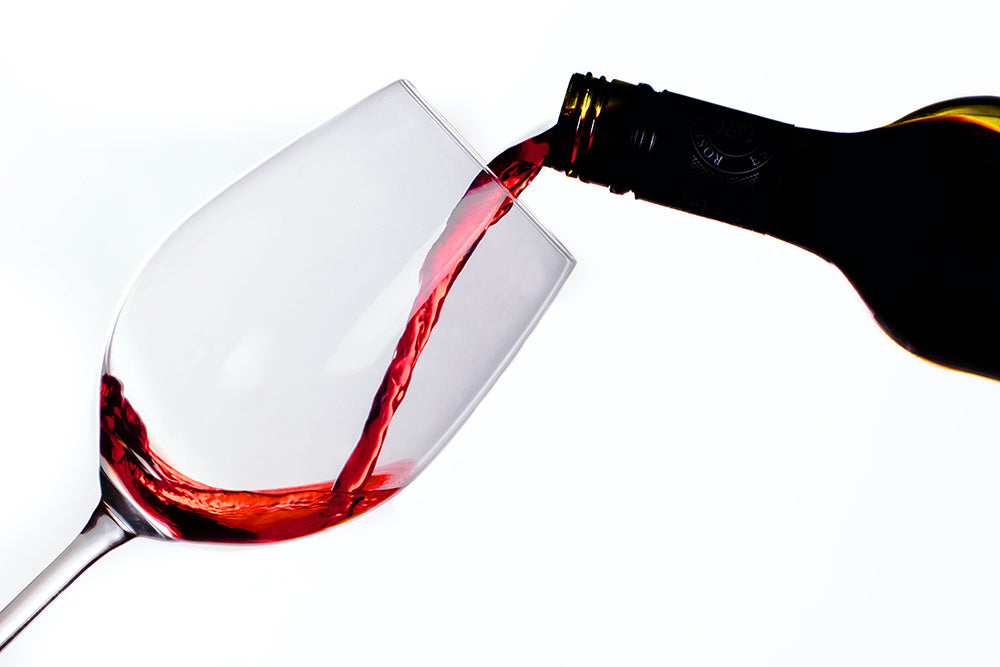
Beginners Guide to Choosing Wine
Oct 31 , 2022
As we get older we may find ourselves yearning for the finer things in life. Late nights clubbing may change to dates at a restaurant or dinner parties with friends, and there may come a time when we want to swap our go-to beer for something a little more sophisticated. The perfect solution for this? Wine of course!
If you’re a complete newbie to the wine scene and want to get in the know before your next social event, have a read of our beginner’s guide below!
Different types of wine
First cab off the rank or grape off the vine if you will, has to be knowing what types of wine are out there. You’ll have heard of different terms thrown around here and there, but do you actually know what they mean? Here are some of the most well-known types of wine.
White wineAs it’s not as strong tasting, nuanced or even intimidating as red wine can be perceived to be, white wine is a good starting point for a beginner. Commons types of white wine include:
Chardonnay: Typically medium-bodied and dry (we’ll explain what these terms mean later on).
Sauvignon Blanc: Balanced with a citrusy, floral flavour and slightly acidic, this is the perfect easy-drinking ‘safe’ wine for a beginner.
Pinot Grigio: Light-bodied, this is another safe bet for wine novices. Bursting with fruits and florals, this is a go-to zippy white wine.
Moscato: Very sweet, floral with a super subtle fizz, this is suited to those who have a sweet tooth.
Riesling: Similar to Moscato, however, riesling is a little less fizz, and a little more sugar. It’s the perfect tipple to cut through spicy dishes.
Red wineCabernet Sauvignon: Also known as ‘cab sav’, this grape is the most planted in the world! And after a few sips, you’ll understand why. Depending on the region, cab sav can be bursting with dark fruits or more on the herbal side - both versions are of course a delight.
Merlot: Like sauv blanc in the white category, a merlot is your go-to entry-level wine. Fruity and fun, without being overwhelming to the palate.
Pinot Noir: One of the most versatile red wines out there, it’s light and silky in colour and appearance. Another great one to enjoy with a meal without it overshadowing the food.
Shiraz: For when you’re wanting just that one big glass of wine after a long day, shiraz is the perfect option. Full-bodied, peppery, spicy and bold are just a few ways to describe this drop.
Malbec: Deep red fruits such as plums and cherries are at the heart of this very drinkable wine. With just a hint of smokiness, this is another good one for beginners to try!
Rose wineOften people think rosé is made by blending red and white wine together, but this is a common misconception. Rosé is actually the result of juice being strained from skins before it becomes too dark in colour.
Because the varieties have similar names and tasting notes to red wine, it can be the in-between or gateway from white wine to red wine drinking. Common rosé wines are Tempranillo, Sangiovese, Zinfandel and Cabernet Sauvignon.
Sparkling wineOne you’ll have tried on any big occasion, sparkling wine is, of course, your bubbly! Cava, Prosecco and Champagne are the most common forms of sparkling wine - however, it’s important to remember that while there are sometimes variations to the Spanish Cava and Italian Prosecco, Champagne can only be called such a name if it’s made in the Champagne region of France.
Common terms associated with wine
Balanced: Meaning that there’s equal representation of ingredients and not one overpowering flavour.
Body: Light, medium and full-bodied refers to the thickness of the liquid felt in your mouth.
Dessert wine: Also its own, lesser-known category, dessert wine is a sweet, sometimes fortified drink that’s consumed in a small quantity with cheese or dessert.
Dry: A wine that has very little sugar content, think the direct opposite of sweet.
Finish: Generally refers to the overall feeling in your mouth after you’ve tasted the wine.
Wine handling and traditions
While we’ve only touched the surface when it comes to types of wine and wine terms, it’s also important to know some wine etiquette. There are specific ways to serve and pour wine, e.g whoever orders the wine gets the first taste, but a lady at the table is always served the first full glass.
Wine is always poured from the right, with the bottle always twisted anti-clockwise towards the very end of the pour. There are several do’s and don’ts when it comes to wine, and they’re super interesting to learn. Even if you never use these skills in practice, it’s always nice to have some wine facts up your sleeve to impress guests!
Ready to make some pour decisions? Sessions liquor store has an array of wines for you to start exploring one sip at a time!! Visit Sessions or chat to the team at one of their stores in Brunswick or Sandringham.
